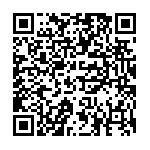|
The following section is short summary from the report:
American College of Cardiology/American Heart Association Clinical Competence Statement on Echocardiography,
Quiñones MA et al. Circulation 2003;107:1068-1089. For extense depiction of cognitive and technical
skills required for competence in TEE, stress echo, as well as documentation and maintenance of competence in each
of those examination modalities, please refer to this unique publication.
Basic requirements for competence in echocardiography
 —
Knowledge of physical principles of echocardiographic image formation and blood flow velocity measurements. —
Knowledge of physical principles of echocardiographic image formation and blood flow velocity measurements.
 —
Knowledge of instrument settings required to obtain an optimal image. —
Knowledge of instrument settings required to obtain an optimal image.
 —
Knowledge of normal cardiac anatomy. —
Knowledge of normal cardiac anatomy.
 —
Knowledge of pathologic changes in cardiac anatomy due to acquired and congenital heart disease. —
Knowledge of pathologic changes in cardiac anatomy due to acquired and congenital heart disease.
 —
Knowledge of fluid dynamics of normal blood flow. —
Knowledge of fluid dynamics of normal blood flow.
 —
Knowledge of pathological changes in blood flow due to acquired heart disease and congenital heart disease. —
Knowledge of pathological changes in blood flow due to acquired heart disease and congenital heart disease.
Requierements for competence in adult transthoracic echocardiography
 —
Basic knowledge outlined in above. —
Basic knowledge outlined in above.
 —
Knowledge of appropriate indications for echocardiography. —
Knowledge of appropriate indications for echocardiography.
 —
Knowledge of the differential diagnostic problem in each case and the echocardiographic techniques
required to —
Knowledge of the differential diagnostic problem in each case and the echocardiographic techniques
required to
 investigate these possibilities.
investigate these possibilities.
 —
Knowledge of appropriate transducer manipulation. —
Knowledge of appropriate transducer manipulation.
 —
Knowledge of cardiac auscultation and electrocardiography for correlation with results of the echocardiogram. —
Knowledge of cardiac auscultation and electrocardiography for correlation with results of the echocardiogram.
 —
Ability to distinguish an adequate from an inadequate echocardiographic examination. —
Ability to distinguish an adequate from an inadequate echocardiographic examination.
 —
Knowledge of appropriate semi-quantitative and quantitative measurement techniques and ability to
distinguish —
Knowledge of appropriate semi-quantitative and quantitative measurement techniques and ability to
distinguish
 adequate from inadequate quantitation.
adequate from inadequate quantitation.
 —
Ability to communicate results of the examination to the patient, medical record, and other physicians. —
Ability to communicate results of the examination to the patient, medical record, and other physicians.
 —
Knowledge of alternatives to echocardiography. —
Knowledge of alternatives to echocardiography.
Training requirements for performance and interpretation of adult
transthoracic echocardiography


|


 ORC
ORC